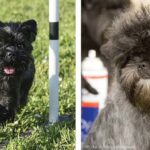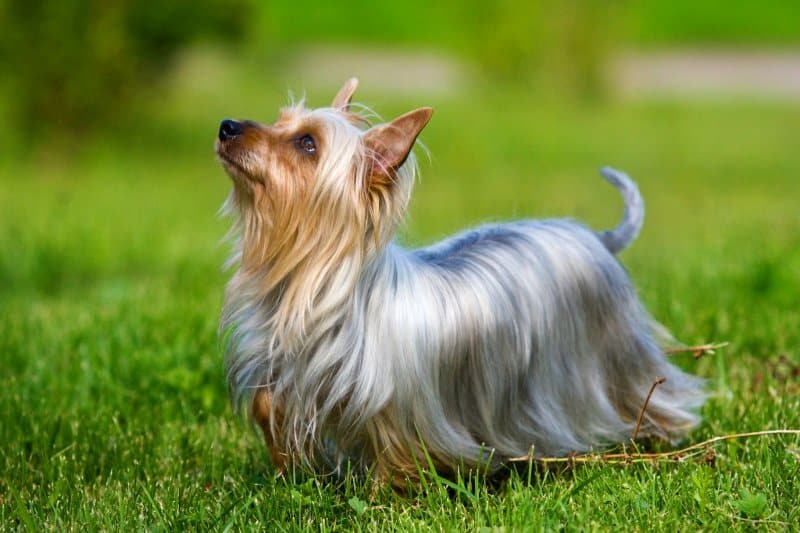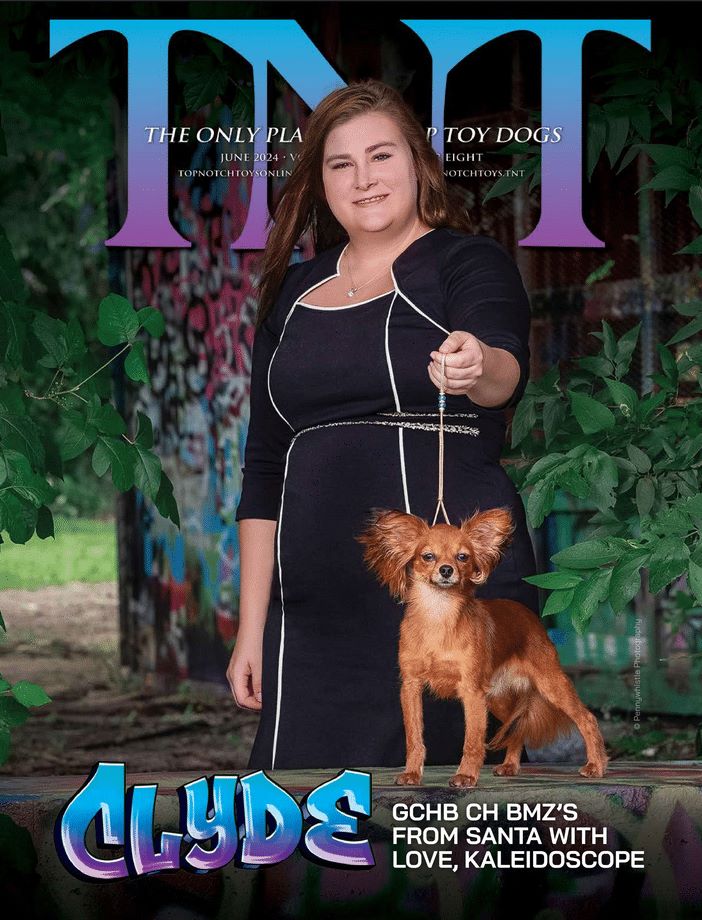I have been asked to discuss the Silky Terrier for purposes of education on breed type. This discussion will be from a longtime breeder’s observations of the breed as it is presented in the ring today. This is strictly my interpretation of our breed and meant to be “food for thought.” It is not meant to be negative in nature but rather to be helpful. My perspective comes from many years of involvement with Silky Terriers.
To start off this discussion, I would like to point out that as breeders we do not always get exactly what we set out to produce. We combine our best knowledge and educated guesses when breeding and we hope for the best. Breeding dogs is truly an art and it takes years to produce consistently. Of course, there are always exceptions and some hit the jackpot immediately. However, this is not usually the case. Mostly it takes time and patience. Hopefully we present to the fancy the best of what is produced. I would encourage newer breeder/exhibitors to only keep and show their best and not try to finish everything in a litter just for the sake of doing that. We are the guardians of our breed and depend on the judges to find and reward the best of our exhibits. That is why knowledge through education is so important.
The Silky Terrier entry is smaller in numbers in the Toy Group, and therefore, we do not get the attention that other breeds receive. I do feel the Silky is frequently overlooked. They are not taken as seriously as breeds that enjoy much larger numbers. It is up to the breeders to change this and make the judges look at and really appreciate our breed by bringing them truly outstanding exhibits.
The Silky Terrier entry is smaller in numbers in the Toy Group, and therefore, we do not get the attention that other breeds receive. I do feel the Silky is frequently overlooked. They are not taken as seriously as breeds that enjoy much larger numbers.
The overall appearance of the Silky and the first impression are important. Balance and type should set him apart and he should not be mistaken for a Yorkshire Terrier. The fact that he is moderately low set and one fifth longer than tall (more rectangular) is a big difference. I have always felt that the eye is drawn to a squarer dog as it looks more balanced. The Yorkshire is a square breed, and therefore, has longer legs proportionately. I bring this to your attention to help you understand correct proportion in the Silky. It is easier to breed a good topline in a shorter back. But it is possible to get good toplines in rectangular dogs.
The Silky should also have a moderately long muzzle (more like a Terrier) which is distinctly different than the Yorkshire. Silkys are a toy terrier. They should have an air of confidence. When I started in this breed, it was not unusual to have the judges bring the dogs to the center of the ring to “spar.” This act truly brings out the beauty of the terrier type. If your dog would not spar it did not do as well as those that did. I really miss this part of exhibiting and wish they would bring it back. I assume this has been discouraged as we are in the Toy Group and others might find this disruptive.
Coat and texture are really important. It should be straight, silky, and have beautiful shine. When you put your hands on a true silk coat you will know it and never forget it! It is hard to breed and should be rewarded when found. Do not let color confuse you. An important fact not mentioned much anymore (but recognized by “older” breeders) is that the Silky is a tri-colored dog. The body is blue and can be any shade from silver blue to slate blue. The body blue should not have gold hairs in it.
Coat and texture are really important. It should be straight, silky, and have beautiful shine. When you put your hands on a true silk coat you will know it and never forget it! It is hard to breed and should be rewarded when found.
This has become a problem again and seems to pop up every 10 years or so. Breeders need to pay attention to this. The tan appears on the muzzle, cheeks, around the base of ears, and on the legs, feet, and vent. Tan is tan and not red. Tans can get too dark and red. The topknot should be silver or fawn and should be “lighter” than the tan points. This contrast is important and thus creates the tricolor. The topknot (no preference for either silver or fawn) should not have any smut color in it. No gray or black in the topknot of older dogs. Puppies start out with black hair on their heads, and as they mature they “clear” color. Do not penalize a puppy for this, although you want to see some clearing which will show at the part.
I would like to bring up a few points that I feel need attention. The head should be strong with a wedge shape. The stop is shallow. The eye is small, dark, almond-shaped, and has dark pigment. We have heads that are deep in stop, short in muzzle, and wide between the eyes with round non-pigmented rims. This expression suggests “toyish” and is not correct. I interpret the Breed Standard to mean the Silky is of toy size with more terrier characteristics. Light eyes are a serious fault. In the Standard, the first word describing head is “strong” and it calls for a piercingly keen expression. The ears are another problem in this breed.
The first word in the Standard, describing the ear, is “small.” They are V-shaped and set high on the head. They are not to be leaf-shaped or rounded at the tips. They are carried erect without “any” tendency to flare off the head (low set). Ears in our breed need work on their size and set. For years, I felt the breeders made strides in improving them and we saw lots of pretty ears. It has now gone the other way. Some ears set us back 25 years.
Topline is another important mention. It is level. A roach, dip or high in rear topline is a serious fault. The tail is set high and carried at twelve to two o’clock position. The tail is docked. Ideally, it should neither be gay in carriage (over the back) nor held down.
Feet should be small and catlike (round). They should have well-arched toes. Be mindful of splayed feet, long pasterns, and bowed front legs. I still see east and west fronts (feet facing opposite directions). Hocks should be short.
Hopefully my observations will be helpful to anyone involved or interested in the Silky Terrier. My comments are solely meant to be constructive, as I love and admire this breed.
Silky Terrier Dog Breed Magazine
Top Notch Toys is the only publication to offer dedicated Digital Breed Magazines for ALL recognized AKC Toy Group Breeds.
Read and learn more about the Silky Terrier dog breed with articles and information in our Silky Terrier Breed Magazine.
Error embedding FlippingBook shortcode, please check the flipbook url. (https://digital.topnotchtoys.com/view/387695320/)









